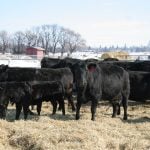Four RMs to participate | Program pays landowners for the environmental benefits they provide society
Four Saskatchewan rural municipalities east of Regina have been selected to participate in a pilot conservation project.
Producers in the RMs of South Qu’Appelle, Indian Head, Francis and Lajord will have access to funding through the Alternative Land Use Services project once it is operating this spring.
The three-year demonstration project was announced at the Agricultural Producers Association of Saskatchewan’s recent annual meeting.
APAS has worked for years to establish ALUS as a way to recognize farmers for the environmental benefits they provide to society.
Read Also

VIDEO: Agritechnica Day 4: Robots and more robots, Nexat loves Canada and the trouble with tariffs
Agritechnica Day 4: Robots and more robots, Nexat loves Canada and the trouble with tariffs.
Norm Hall, chair of the organization’s environment committee and newly elected president of APAS, said it has taken a long time to get the project off the ground, mostly because of funding issues.
“The original funding model was looking at trying to get government funding (to) get the public to pay for it,” he said in an interview. “Governments now don’t have an appetite for that.”
Instead, APAS is working with the Delta Waterfowl Foundation, which offered money from private sources. The other partners are the Saskatchewan Wildlife Federation and the Sask-atchewan Association of Watersheds.
The project will be similar to other ALUS projects in Alberta, Ontario and Prince Edward Island.
A manager will be hired to co-ordinate the project and help farmers apply for money for improving wetlands and providing habitat.
Hall said the four RMs are strategically located on the Trans-Canada Highway. Individual projects will be visible to the public and policy makers.
“There happens to be a creek that runs through town,” he added, referring to Regina’s Wascana Creek. “The RM of Lajord is at the headwaters of Wascana Creek and what better place for a project.”
Hall said he hopes the project can continue for longer than three years.
“If we hit the five-year mark and things are going good and we can continue funding, we’ll continue it and try and expand it,” he said.
Ontario’s project in Norfolk County started as a three-year project in 2007 and has recently expanded.
Jim Fisher, Delta Waterfowl’s director of conservation policy, said Sask-atchewan faces environmental challenges that are best dealt with by farmers. However, a top-down approach doesn’t work.
“We’ve come to the realization that ALUS is nothing else than a brand new way for conservation to be delivered in Canada,” he said in a news release.















